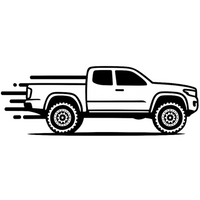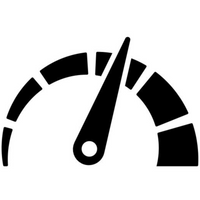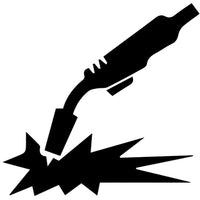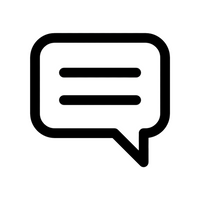What Makes the DRT Tacoma High Clearance Rear Bumper So Strong?
At DRT Fabrication, strength isn’t an accident, it’s the result of intentional design. While many aftermarket brands focus on flashy aesthetics or overbuilt, overweight steel, we take a different approach. Every DRT every product is engineered with a deep understanding of how forces travel through your truck during off-road impacts, winching, and trail abuse.
Whether you're rock crawling in Moab or pre-running in the desert, our bumpers are designed to handle it all. The goal is simple: maximize strength where it matters most while keeping weight to a minimum to preserve suspension performance, fuel efficiency, and handling.
So, what exactly makes a DRT Tacoma high clearance rear bumper different?
Intentional Design: Function First
We coined the term intentional design to describe our approach: every line, gusset, and weld serves a purpose. If it’s on our bumper, it’s there to improve strength, deflection, or reliability. Looks are secondary, though we’d argue our designs speak for themselves.
Let’s break down the three critical design principles we use:
Wedge Geometry
Most aftermarket bumpers are just flat panels welded together. That’s fine until it isn’t.
We use wedge geometry, which incorporates angled structures that redirect forces during impact. Think of it like a plow cutting through dirt, it splits and redirects energy rather than absorbing it head-on. These shapes reduce stress on welds and frame mounts, allowing the bumper to resist deformation while staying lightweight.

What Happens in a Wedge or Triangulated Design?
When a load is applied to a flat or unsupported surface, most of that force travels directly into welds or thin joints as shear, the mode steel and welds are weakest in.
But with wedge geometry or triangulation, we change the equation.
When force strikes an angled surface, it splits in two directions:
One component compresses the angled plane, The other attempts to shear across it
Here’s the magic: the angled surface converts part of that shear into compression. And steel is significantly stronger in compression than in shear.
By doing this intentionally, we get more performance out of less material.
The Engineering Behind Our Rear Bumper Support System
When designing armor for real-world off-road abuse, it’s not enough to just use thick steel. True strength comes from understanding how forces interact and then engineering around it. The angled bolt-on frame support and integrated gusset system on our Tacoma high clearance rear bumper is a prime example of that.
Let’s dissect what’s happening under impact, and why this setup is so effective.
1. The Wedge Support: Redirecting Load Into Compression
The bolt-on support bracket is angled downward from the chassis to the bumper, creating a wedge-like geometry. When the bumper takes an upward hit (e.g. from a rock pushing up on the wing), the load path isn't vertical, it’s redirected diagonally up the angled brace.
This is critical because it converts the majority of the load into compressive force. Here's why that matters:
-
Steel is 2–3x stronger in compression than in shear.
-
Angled support decreases the shear component of the force and increases the compressive component.
-
Instead of shearing a bolt or deforming a plate, the bumper is now asking the bracket to shorten which is something it's mechanically resistant to doing.
This angled design takes the brunt of the vertical force and sends it directly into the side of the frame rail where factory crossmembers land, a much stronger structural zone than the bumper skin or outer mounts alone.
2. Material Constraints: Lateral Resistance Through Geometry
For the bumper to continue moving upward beyond a certain point, the only way it can do that is by forcing the wedge support to “flatten out.” That would require the bumper to push outward and upward simultaneously, which would:
-
Spread the side of the bumper laterally
-
Bend or stretch the welds connecting the wing to the main bumper body
-
Fight against triangulation and structural overlap
This multi-axis resistance means the bumper has to overcome multiple failure modes simultaneously not just vertical force. It becomes an inefficient path for energy, and as a result, the bumper holds strong.
3. The Weld-On Gusset: Secondary Load Path and Tension Control
In the rare event that the bolt-on support is pushed far enough to reach a near-horizontal position (flattening the wedge), your system doesn’t give up, it transfers the remaining load into a welded gusset that connects the bumper to the frame plate.
At this stage:
-
The weld-on gusset enters tension, attempting to prevent the bumper from spreading outward and lending a hand in preventing vertical movement.
-
Steel is also very strong in tension, especially across a short gusset tied directly into the frame structure.
-
This gusset effectively “catches” the bumper before it can rotate further.
This behavior is similar to a limit strap on a suspension arm. Once the main structure flexes as far as it can mechanically, the gusset becomes a last-resort anchor, holding the wing in place and preventing structural failure.

Avoiding the Common Failure Point: Slotted Bolt Holes and Shear-Loaded Fasteners
Another major difference between DRT’s rear bumper support system and what you’ll find in many off-the-shelf bumpers is how the bolt-on support is attached.
A lot of other companies use slotted holes in their frame supports. On the surface, this might seem like a convenience for fitment or adjustability but it introduces a critical structural weakness.
Here’s why:
When a slotted hole is used(especially directly in shear), the bolt becomes the only thing resisting movement, and it's doing so entirely in shear.
During an upward impact (which is common off-road), the load tries to slide the support bracket vertically, putting all the stress directly across the bolt shank. Bolts are weakest in shear, especially if the load isn’t clamped across a solid, tight interface. Once there's even minor play, the bracket can shift, deform, or tear through the slot entirely.
At DRT, we do things differently.
Our bolt-on support uses precision-cut holes, not slots, ensuring a tight, fixed connection.
The mounting interface between the support and bumper is angled and keyed, which means the bracket must compress into the bumper not slide against it. This converts shear-prone bolt loads into clamped, multi-directional force paths that the structure is designed to absorb.
By eliminating slotted holes and designing around real-world forces, we ensure that our support doesn’t rely on the bolts alone. Instead, the bracket geometry and angled faces carry the load while the bolts just keep everything locked in place.

Triangulation
Triangulation is a structural principle that uses triangles to distribute loads evenly. In bumper design, this means we brace corners and support points using interconnected triangular forms that are very resistant to distortion under stress. A triangle is inherently stable; unlike a square, it won’t flex or collapse unless the material itself fails.
This makes a huge difference when your vehicle takes a hit on the trail or when a winch is under full load. Instead of buckling, our bumpers hold firm and maintain their structural integrity.
Why Triangulation Matters and How We Maximize It Within Factory Constraints
When you look at a DRT bumper, the structure isn’t just boxes and brackets, it’s a system of engineered load paths. One of the most important principles behind that strength is triangulation.
What Is Triangulation?
In structural design, a triangle is the most stable shape. Unlike a square or rectangle, a triangle can’t deform without changing the length of one of its sides which takes real force. That makes it perfect for off-road armor, where you want a structure that holds its shape under impact, winching, or twisting.

When a bumper takes a hit, whether it's from the side, underneath, or during a recovery pull a triangulated structure redirects that energy into stronger parts of the frame instead of letting it collapse or flex. It’s not just about withstanding force it’s about controlling where that force goes.
Triangulation in the Real World
Look closely at our 2016–2023 Tacoma high clearance rear bumper and you’ll see it everywhere:
-
Side wings reinforced with diagonal members
-
Braces connecting outer corners to central crossmembers
-
Load paths terminating into factory frame rails or gusseted mounts
These triangles create a web of resistance that disperses impact across the bumper instead of concentrating it at any one weld or mount point.
Even subtle triangles like the angled inner braces shift loads away from critical joints and into more durable areas, increasing the strength of the entire bumper.
 Working Within Constraints
Working Within Constraints
Here’s the catch: when you're designing for a production vehicle, you can’t just throw triangles everywhere.
Factory mounting holes, body panels, suspension, and drivetrain components all create real-world limitations. Sometimes there’s simply not enough room for a full structural triangle.
But that’s where intentional design shines.
Instead of giving up, we integrate triangulation wherever possible, and combine it across the entire bumper system. Even small angles and partial supports linked with the rest of the structure create meaningful gains in rigidity and load dispersion.
It’s like building a truss bridge. One triangle won’t hold up a truck but 30 working together? That’s strength by design.
Most companies don’t bother. We do because we understand what happens on the trail. Your bumper isn't just armor, it’s a structural extension of your frame.
Why Material Overlap Outperforms Butt Welds in High-Impact Zones
In off-road fabrication, strength isn't just about material thickness. It’s about how materials are joined and how those joints behave under stress. One of the most overlooked but critical areas of a bumper is the bottom corner, especially on the rear. This zone takes the brunt of abuse when dropping off ledges, sliding over rocks, or backing into terrain.
Most bumper manufacturers rely on a butt weld to join the main bumper body to the outer wing. At DRT, we go further by using material overlap fully welded on both sides. Here's why that matters.

Butt Welds vs. Overlap Joints: How They Behave Under Vertical Load
A butt weld joins two plates edge to edge. Under vertical impact, like hitting a rock from below, the force travels directly into the weld line. This creates a stress concentration at the weld root, which becomes a natural tear point. The material on either side of the weld acts like a hinge and once the weld begins to fail, it tends to unzip under repeated loading or sharp impacts.
Butt welds are:
-
Easy to design
-
Fast to fabricate
-
And prone to failure under bending or peeling forces especially in high-impact zones.
An overlap joint, on the other hand, sandwiches one plate over the other. When vertical force is applied:
-
The load is distributed across a much larger surface area
-
The force is resisted through both weld shear and plate compression
-
The joint acts like a laminated beam, making it dramatically more resistant to tearing, bending, or peeling
This means an overlap joint doesn’t just hold parts together it actively disperses force into the structure, instead of localizing it at the seam.
Double the Thickness, Double the Strength.
On our Tacoma high clearance rear bumpers, we use material overlap specifically at the bottom corner where the wing meets the main shell, a known failure zone for most bumpers.
Here’s what that looks like:
-
The outer wing wraps over the main body panel
-
Both sides of the joint are fully welded
-
This results in double the material thickness right where the bumper is most likely to hit trail obstacles
-
Instead of the corner flexing or tearing, the structure spreads the load into adjacent planes
This isn’t overkill. It’s preventative engineering. By reinforcing the corner with material overlap, we’re giving it the best chance to survive real-world abuse.
Butt welds may be faster to produce but they’re not built for repeated vertical impact.
Material overlap is. It creates stronger joints, disperses force more effectively, and eliminates the most common point of failure in rear bumper corners. We use it where it counts not because it's easy, but because it works.
Engineered for the Real World
It’s easy to build something heavy. It’s much harder to build something smart.
We’ve watched competitors’ bumpers bend, crack, and shift under pressure not because they used the wrong material, but because they overlooked the fundamentals: force redirection, proper joint design, and structural load paths. These aren’t optional details they’re the difference between a part that holds up and one that fails when you need it most.
At DRT Fabrication, we obsess over every cut, weld, and angle because we know what our customers put their trucks through. Whether you're crawling rocks, crossing deserts, or relying on your winch in a recovery situation, our bumpers are designed to take the hit and keep going.
The Bottom Line
Because we understand how to make steel work smarter, not just harder, we can offer bumpers that are both lighter and stronger. That’s not just good for durability, it’s better for your entire vehicle.
Less weight means: Sharper handling, Reduced suspension fatigue, Less stress on frame rails, Better performance on long trips and technical trails
In a market full of overbuilt anchors and underbuilt compromises, we’re proud to offer something different: purpose-built strength through engineering, not excess.
This is the result of intentional design and it's what sets DRT apart.





